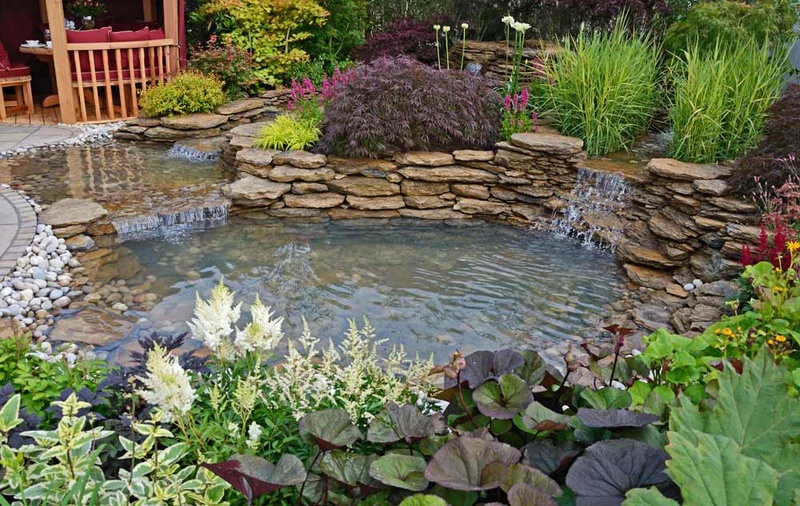
Create Your Own Water Garden
Water gardens are delightful additions to a backyard. They can be assembled easily as above-ground container features or as in-ground, lined pools. A variety of aquatic plants, from tall, showy cannas to flat, floating lilies, grow effortlessly and quickly in these gardens.
Homeowners typically think of water gardens as a desirable addition to their landscaping but hard to create or install. This short blog will show you that creating this kind of garden isn’t as hard as you think.
Active or Still Water Gardens
Water gardens are either still or active, meaning the water moves or it doesn’t. Active gardens contain fountains. Still gardens contain calm water, which is the preference for most aquatic plants. The water in a water garden needs to be dechlorinated.
Creating a Water Garden
To create a water garden, you’ll need a pond or a container, water, plants, and water snails. The latter helps establish ecological balance. You don’t need pumps or filters; you just need to refill water that evaporates. Pumps are only necessary if you plan to add koi fish to your pond.
Most water gardens are 18-24 inches deep. You can assemble an above-ground garden comprising lined railroad ties or barrels or pots, or you can dig a hole in the ground and line it with a pond liner. Check with your local officials regarding depth, so that you don’t unintentionally dig a swimming pool that requires a permit.
Water Garden Plants
Water garden plants are floating, submerged, or emergent. The University of Florida (UF) recommends a mix of all three in a water garden. Cannas are tall emergents with bright flowers that draw butterflies. Water lilies are floaters that shade water and reduce algae growth.
Aquatic plants grow quickly and require control. A water garden with the water surface three-fourths covered in vegetation is considered ideal.
Buy plants at nurseries (which mostly carry them during the summer) or order them on-line. Know someone with a water garden? Ask for the extras when they divide their overgrown plants.
Robert Smaus (National Gardening Association) recommends these water garden plants: tropical water lilies, hardy water lilies (zone 3-11), yellow snowflake, water poppy, water hawthorn, cannas, and parrot’s feather. For more water garden plant suggestions, visit Happy DIY Home.
Planting a Water Garden
Many water gardeners install their plants in individual containers and then submerge these in their ponds. Water lilies need pots that are 10” deep and 18” wide. Smaller plants do fine in smaller containers. Drainage holes in containers should be plugged or covered with two layers of newspaper.
Use regular garden soil in the pots. You can cover the soil with small rocks or just leave it. It’ll settle and compact after a day or two under water. Heavy clay soil is also fine for aquatic plants.
About Mosquitoes
The University of Florida warns that mosquitoes can carry dangerous diseases, so homeowners should make sure that their water gardens aren’t breeding grounds for these insects. There are three ways to do this. 1) In a container water garden, add water until it flows over the edges and flushes out larvae. 2) Install a pump in a larger garden to circulate water and discourage mosquitoes. 3) Add gambusia fish. These eliminate mosquito larvae and pupae and can often be obtained for free from mosquito-control agencies.
Thanks to Robert Smaus and the University of Florida for the info for this article.